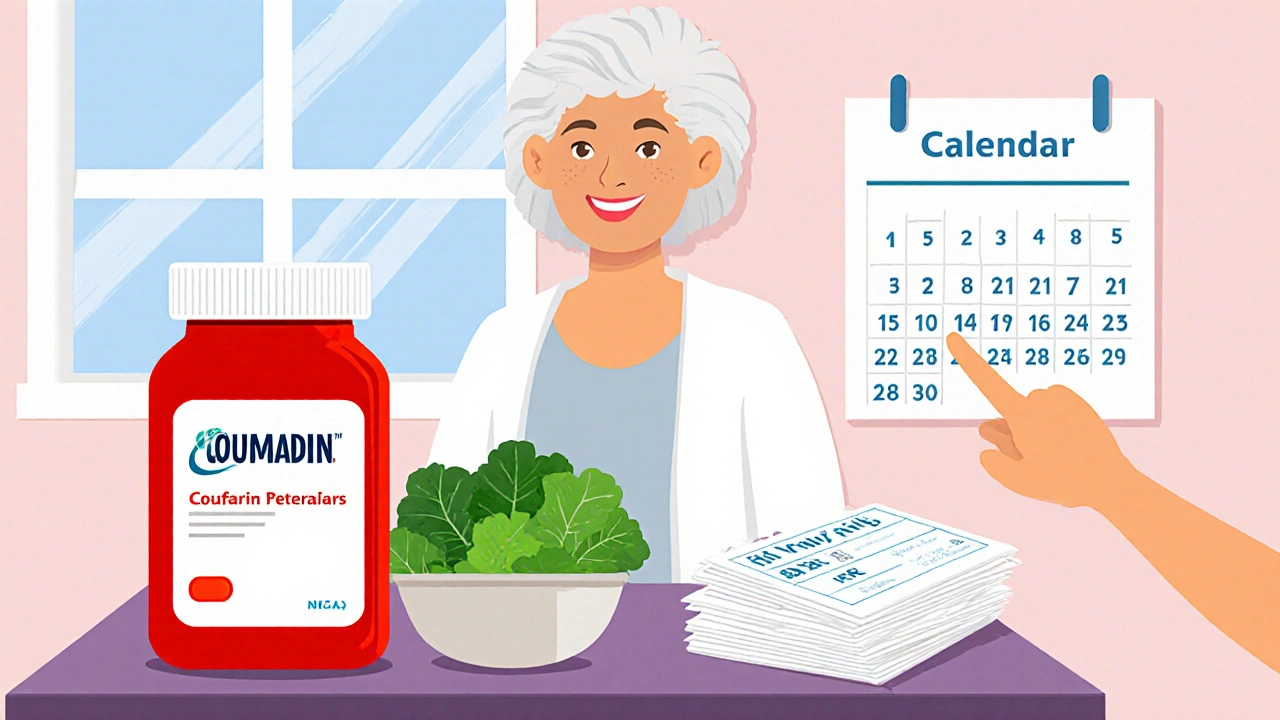Anticoagulant Alternatives: A Practical Overview
When working with Anticoagulant Alternatives, medications or therapies used instead of traditional blood thinners to prevent clots while minimizing side effects and monitoring needs. Also known as blood thinner substitutes, they help people who struggle with the taste, diet restrictions, or lab visits linked to classic anticoagulants. Anticoagulant alternatives cover a range of pill, injection, and lifestyle‑based options, each tailored to a specific clot‑risk profile.
Why Look Beyond Traditional Blood Thinners?
Traditional therapy often means Warfarin, a vitamin K antagonist that has been used for decades to thin blood. Warfarin’s biggest drawback is the need for frequent INR checks, dietary vigilance, and a higher chance of bleeding if dosed incorrectly. Because of these hurdles, many patients and clinicians ask: "Is there a safer, easier way to stay clot‑free?" The answer lies in newer agents that reduce monitoring, have fewer food interactions, and still protect against deep vein thrombosis, pulmonary embolism, and stroke.
Enter the class of Direct Oral Anticoagulants (DOACs), modern pills such as apixaban, rivaroxaban, dabigatran, and edoxaban that inhibit specific clotting factors. DOACs embody the promise of anticoagulant alternatives by offering fixed dosing, rapid onset, and no routine lab work. They are especially popular for atrial fibrillation and post‑operative clot prevention. The trade‑off is a higher drug cost and, for some, limited reversal options—though antidotes are emerging. Understanding when a DOAC fits your health picture is a key step in personalizing anticoagulation therapy.
For patients who prefer an injectable route or need short‑term protection after surgery, Low Molecular Weight Heparin (LMWH), a subcutaneous anticoagulant that works by enhancing antithrombin activity provides a reliable bridge. LMWHs, like enoxaparin, have predictable pharmacokinetics, which means fewer dose adjustments than unfractionated heparin. They are often used when oral agents can’t be taken, such as during severe nausea or after certain orthopedic procedures. While injections can be inconvenient, the reduced monitoring burden makes LMWH a solid alternative for many high‑risk patients.
Not every clot‑prevention strategy requires full anticoagulation. In some cases, Antiplatelet Therapy, agents like aspirin or clopidogrel that stop platelets from sticking together serves as an effective, lower‑risk option, especially for people with mild cardiovascular risk or those who cannot tolerate blood thinners. Antiplatelet drugs work upstream of the clotting cascade, so they carry a different bleeding profile—typically less severe but still important to monitor. Deciding between an antiplatelet and a full anticoagulant depends on the underlying condition, such as peripheral artery disease versus atrial fibrillation.
Across these options, three semantic connections emerge: anticoagulant alternatives encompass DOACs and LMWHs; choosing an alternative requires assessing clotting risk and patient lifestyle; and newer agents often reduce the need for routine lab monitoring compared to warfarin. Below you’ll find a curated set of articles that break down each alternative side‑by‑side, explain dosing nuances, list common side effects, and help you decide which option aligns with your health goals. Dive into the guides to get practical tips, cost‑saving advice, and clear comparisons that empower you to make an informed choice.

Coumadin vs Alternatives: Warfarin Comparison Guide
A clear, side‑by‑side look at Coumadin (warfarin) versus newer oral anticoagulants, with pros, cons, costs, and practical tips for choosing the right blood thinner.
Read More